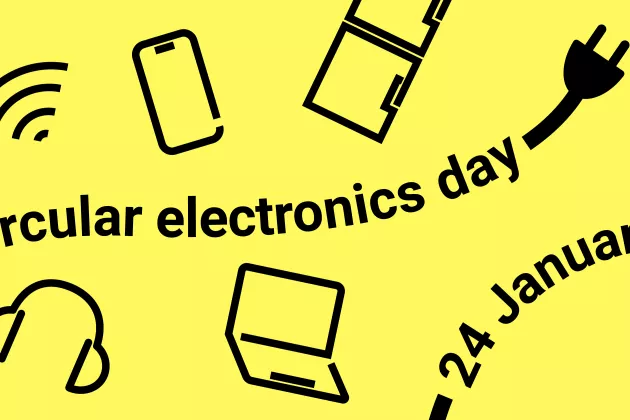Each year, millions of electronic devices are discarded due to breakage, obsolescence, or simply convenience. By 2030, it is estimated that 82 billion kg of e-waste will be generated. As the fastest-growing solid waste stream globally, e-waste presents increasing challenges for both human health and the environment, highlighting the importance of Circular Electronics Day (#CircularElectronicsDay).
Circular Electronics Day is a global initiative that underscores the environmental and social impacts of e-waste and champions sustainable practices in the production, use, and recycling of electronics.
"From smartphones and laptops to countless other devices - electronics are integral to our daily lives. Yet, we often dispose of them long before necessary. Treating these items as disposable exacerbates the global e-waste problem,"says Andreas Nobell from TCO Development, a founding member of the Circular Electronics Initiative, the organization behind Circular Electronics Day. "Circular Electronics Day urges us to adopt smarter, more sustainable solutions to reduce waste and prolong the usage of our devices. Every small step counts."
To mark Circular Electronics Day, here are five actionable ways to make electronics habits more sustainable:
- Refuse and reuse: Consider whether replacing your current device is truly necessary. Extending the use of electronics is the most effective way to reduce their environmental impact.
- Care, repair, and upgrade: Protect your devices from extreme temperatures and handle them with care. Opt for repairs and upgrades whenever possible to extend their lifespan. Every extra year a device stays in use significantly cuts down on its overall impact.
- Buy second-hand: The second-hand market for electronics is thriving. Buying or selling used devices extends their lifecycle and reduces waste.
- Choose durable products: Invest in devices designed for longevity and circular flows. Look for sustainability certifications and durable design.
- Refurbish, remanufacture, or recycle: Consider a refurbished or remanufactured product when possible. When the products are beyond repair, don’t let them collect dust in a drawer or end up in the trash. If the product has reached its end of life for one user and it is not possible to reuse or sell them, send them to an extended producer responsibility scheme, an electronics recycler or a remanufacturer/refurbisher where they will be handled responsibly to recover valuable resources, and minimize environmental harm.
Also, remember to support global recycling. Beyond recycling your own electronics, consider the broader impact. In many countries, electronics end up in landfills due to a lack of proper recycling facilities, harming both the environment and local communities. Support initiatives that promote the collection and recycling of e-waste in these regions, and help to create a more inclusive and global approach to recycling.
Backed by a network of over 30 organizations globally, the Circular Electronics Initiative leads the charge in motivating both consumers and businesses to adopt circular practices. By making even minor adjustments, we can all contribute to a more sustainable digital world.
About Circular Electronics Initiative
Circular Electronics Initiative is an international network with 34 member organizations. Its purpose is to inspire decision-makers, businesses, and consumers to use and manage electronics in a more circular way.
The initiative drives communication activities, including Circular Electronics Day (#circularelectronicsday), which is highlighted every year on 24 January. You can find more information about the initiative and member organizations on the Circular Electronics Initiative website.





